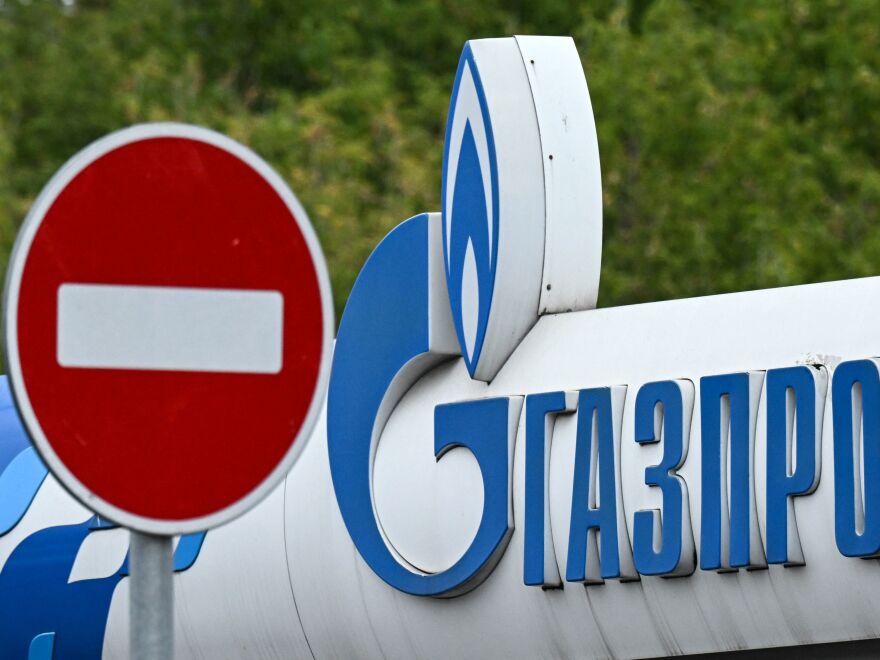If air-conditioning your home felt expensive this summer, get ready, because turning up the heat may cost even more this winter.
The rising utility bills are being driven by the surge in the price of natural gas, which generates about 40% of the United States' electricity.
The U.S. Energy Information Administration expects this surge to last through the winter, given that Russia's invasion of Ukraine has reduced overall supplies while global consumption remains high.
Here's what's behind the spike in prices and how it could impact you.
Russia is weaponizing its natural gas supplies
There's much less natural gas in the world these days because of Russia.
For years, Russia supplied Europe with cheap natural gas to power its factories and heat its homes. But after the West imposed sanctions for the war in Ukraine, Russia slashed its supplies, effectively weaponizing its natural gas.
While the global supply has dropped, demand has remained high.
In the U.S., half of homes use natural gas for heating or cooling.
Given how hot this summer was for parts of the U.S., many had their air conditioners working overtime.
U.S. natural gas inventories have also dropped this year, which together has driven up prices around 300% from just a few years ago.
What will this mean for prices in the U.S.?
Prices are expected to keep climbing.
Even though the country's inventory of liquid natural gas is low, this hasn't stopped the U.S. from exporting large amounts to Europe to help fill the void left by Russia.
U.S. natural gas producers have an incentive to export since they stand to profit from the spike in global prices.
"If the price they can get in Europe is a lot more than what they can sell their natural gas for in the U.S., then some of that is going to be exported to Europe, and that is going to raise the price of things in the United States," says Ellen Wald, an oil and gas expert with the Atlantic Council.
"Not to the levels that we're seeing in Europe, but we could continue to see more expensive energy costs in the U.S. because of this," she adds.
There's also a geopolitical argument for stepping up supplies to Europe. The European Union is a huge trading partner, and major economic disruptions there could send aftershocks to the United States.
How much will electricity bills go up?
Bills could go up a lot, especially in a state like Texas, which is the largest natural gas-consuming state, followed by California.
The National Energy Assistance Directors Association (NEADA) estimates the average family may pay more than $1,200 to heat their home this winter. That's $175 more than last winter, which is notable considering that nearly 40% of families are already feeling financially strapped, according to a new NPR/PBS NewsHour/Marist poll.
The 40% of U.S. homes that use natural gas could see their winter heating costs increase by a third, according to NEADA, which could keep inflation up.
But much of this also depends on winter weather. The U.S. could be spared a massive spike if it's a mild winter.

How long could this last?
A lot depends on whether Russia will turn its gas taps back on for Europe ahead of winter. Kremlin spokesman Dmitry Peskov said this month that Russia will resume gas flows only if the West lifts sanctions.
The other big factor is how quickly Europe can find alternative natural gas sources.
Right now, Europe gets most of its gas through pipelines, but it's racing to set up additional infrastructure to receive liquefied natural gas, which can be transported by sea from countries such as Qatar.
That will take time, but over the long term it would free Europe from depending on Russia for a key commodity.
"Europe will be in a better place because it will have completely gotten rid of its dependency on Russian gas," says Agathe Demarais, global forecasting director at the Economist Intelligence Unit. "After a few years, Russia won't be able to weaponize gas supplies anymore."
Until then, as the U.S. continues exporting its supplies to Europe and demand remains high, this price spike may be here awhile.
Copyright 2022 NPR. To see more, visit https://www.npr.org.




